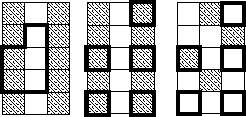![\begin{displaymath}
\bold 0
\quad \approx \quad
\bold r =
\left[
\begin{array}
...
..._2 \\
y_3 \\
y_4 \\
y_5 \\
y_6 \end{array} \right] \end{displaymath}](img1.gif)
Sparse data interpolation is a very important problem in geophysics, due to the high cost associated with data collection. Irregular sampling introduces another level of complexity to the problem. Data interpolation can be implemented using a two stage linear method, the second of which is the minimization of the model when convolved with a filter. The first step is determining an appropriate filter, such as a prediction-error filter (PEF) Claerbout (1999).
A PEF can often be estimated by minimizing the output of convolution of an unknown filter with known data. The one dimensional case,
![\begin{displaymath}
\bold 0
\quad \approx \quad
\bold r =
\left[
\begin{array}
...
..._2 \\
y_3 \\
y_4 \\
y_5 \\
y_6 \end{array} \right] \end{displaymath}](img1.gif) |
(1) |
A method to overcome the need for contiguous data is to stretch the filter Crawley (1998) so that the filter coefficients would fall upon data points. The stretching can be done at multiple scales, due the the scale-invariance of the PEF Claerbout (1999). This method works well as long as the data are regularly sampled, and the stretching is isotropic. If the data are irregularly sampled, the method fails, since the filter coefficients no longer fall upon data points, and again we are left without fitting equations.

 |
A test case has been developed Brown et al. (2000), which consists of a single plane wave oriented at 22.5o, irregularly sampled. We extend this test case, and add complexity to it by adding another plane wave with a different frequency and orientation. In addition we add a substantial amount of Gaussian noise. Crawley's 1998 method of scaling the filter does not work for this case, as the irregular sampling leads to a lack of fitting equations. The sampling is much like the middle case in Figure 1 where the filter does not lie on known data, regardless of how much it is stretched.
 |